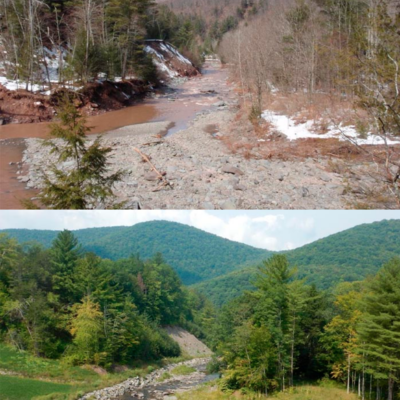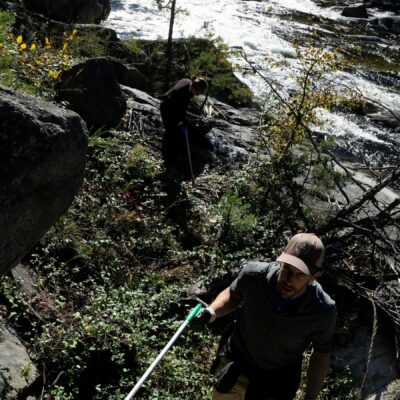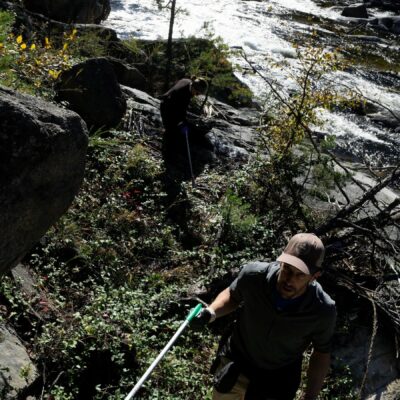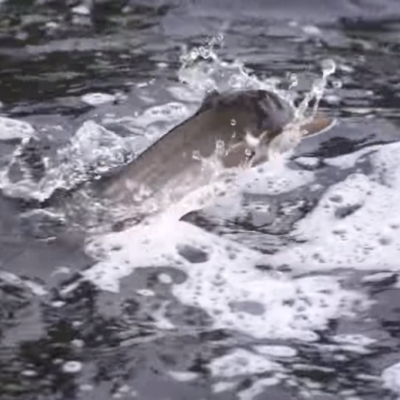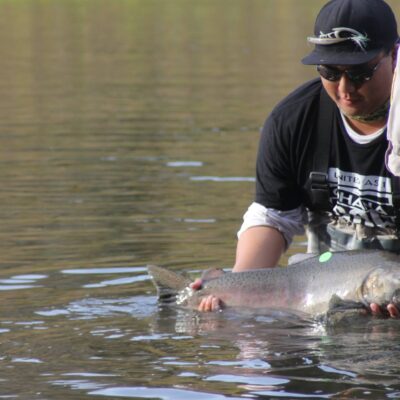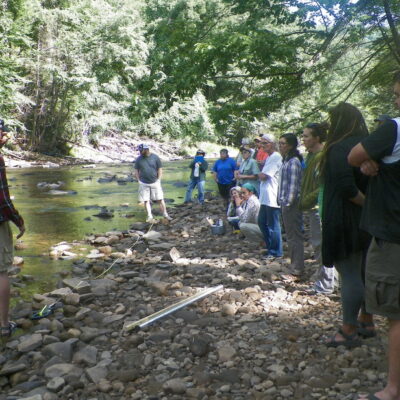Stony Clove Creek in New York, before restoration (top), and after. Photos courtesy of Hudson Valley One. In 2011, when Hurricane Irene nailed the Atlantic coast, Stony Clove Creek near Chichester, N.Y., carried almost 16,000 cubic feet per second of water down its course, flooding the community and generally making a mess of things. Years
By Mark Taylor EDGEMONT, N.C. — The Wilson Creek area of Caldwell County continues to grow in popularity as more people discover the area’s rugged beauty and recreational offerings. On Nov. 3, several hundred people gathered at the Wilson Creek Visitor Center throughout the day to celebrate the area on the occasion of the 50th
By Mark Taylor EDGEMONT, N.C. — The Wilson Creek area of Caldwell County continues to grow in popularity as more people discover the area’s rugged beauty and recreational offerings. On Nov. 3, several hundred people gathered at the Wilson Creek Visitor Center throughout the day to celebrate the area on the occasion of the 50th
by Chris Hunt | November 8, 2018 | Video spotlight
Wild Atlantic salmon in the United States are extremely rare—there are a few that hang on in the coastal rivers in Maine, but, for the most part, three centuries of development have cost this iconic fish most of its spawning and rearing habitat and earned it a likely permanent place on the Endangered Species List.
by Sam Davidson | November 6, 2018 | Conservation
A native Chinook salmon from California’s Central Valley. Conservation of freshwater biodiversity faces major challenges. The fragmented nature of freshwater habitats often results in species populations being highly vulnerable to extirpation. Moreover, areas managed for resource conservation typically reflect jurisdictional or landscape boundaries that have little meaning for aquatic species. Now, a team of scientists
Jessica Strickland and her daughter Vida, project managing in the Sequoia National Forest backcountry. By Jessica Strickland Working with Trout Unlimited really is just NOT boring. What we do as field staff is so diverse that I have become a woman of many hats. A recent weekend was a great example of how what we
A recent economic study confirmed what the thousands of Trout Unlimited volunteers and our partner watershed groups already know: TU’s work directly benefits water quality and makes fishing better. (Trout Unlimited photo) By Chris Branham, Oregon State University CORVALLIS, Ore. — Economists have found that in the United States, watershed groups have had a positive
